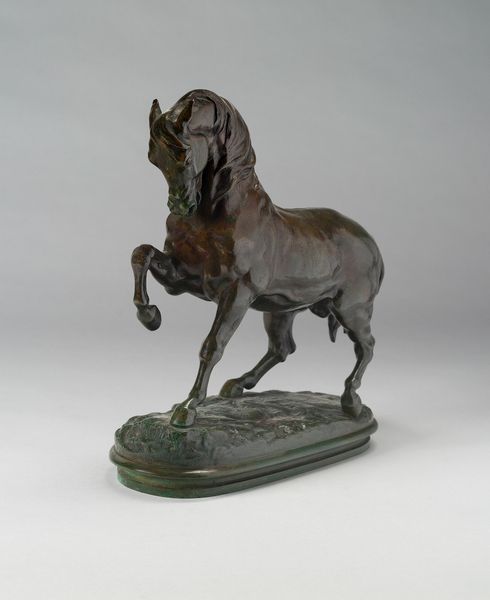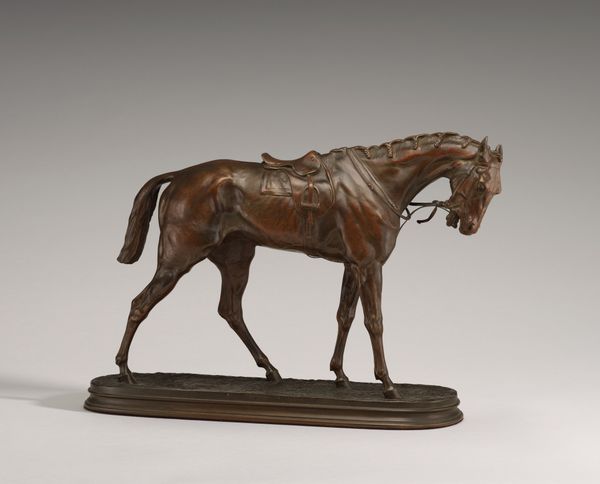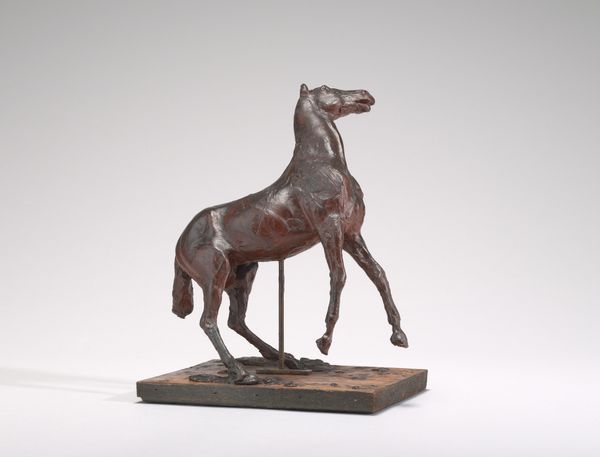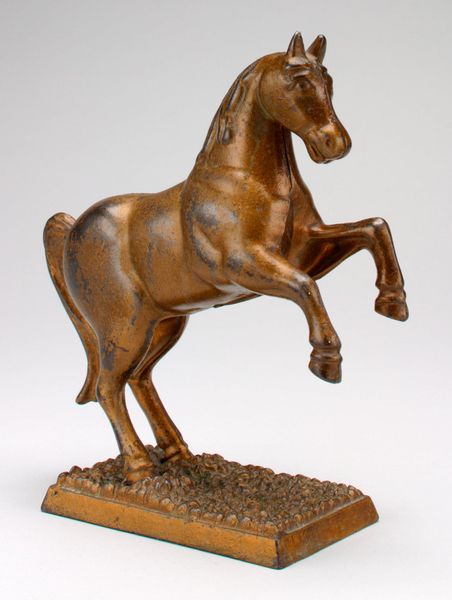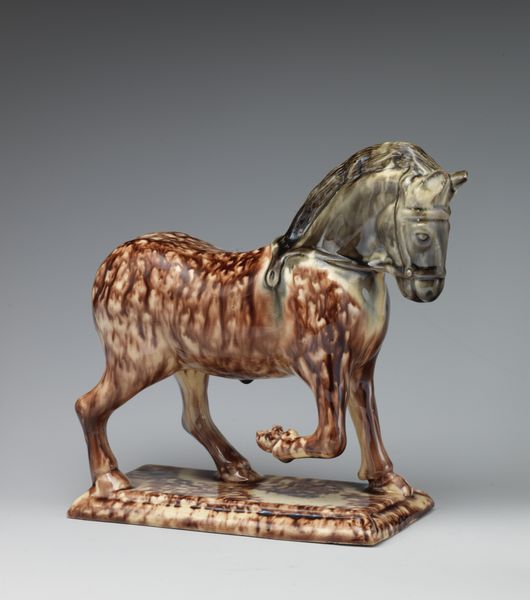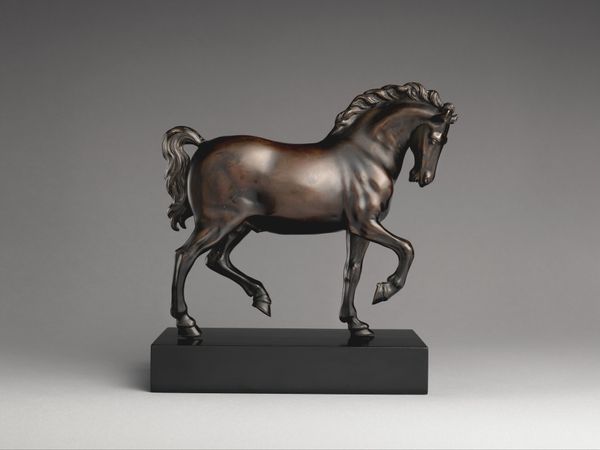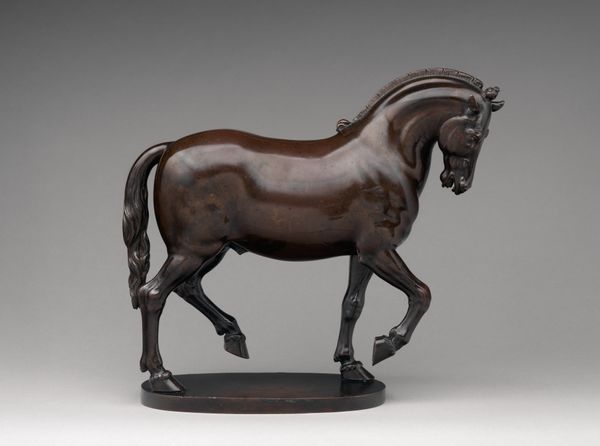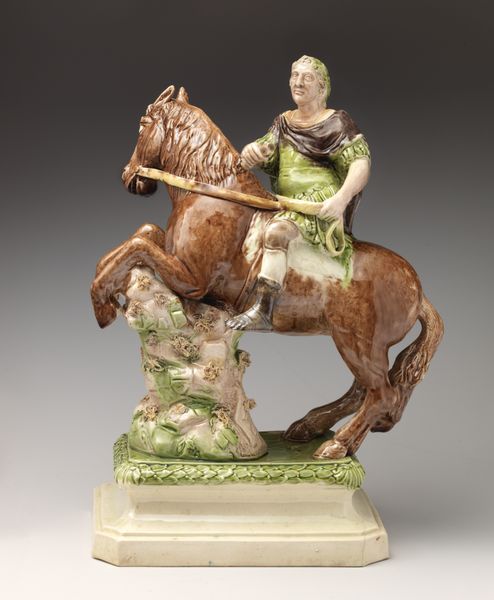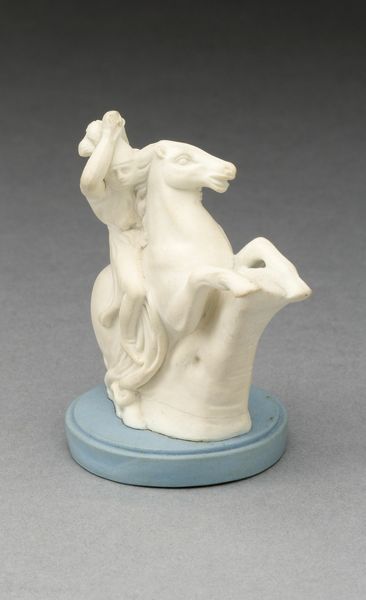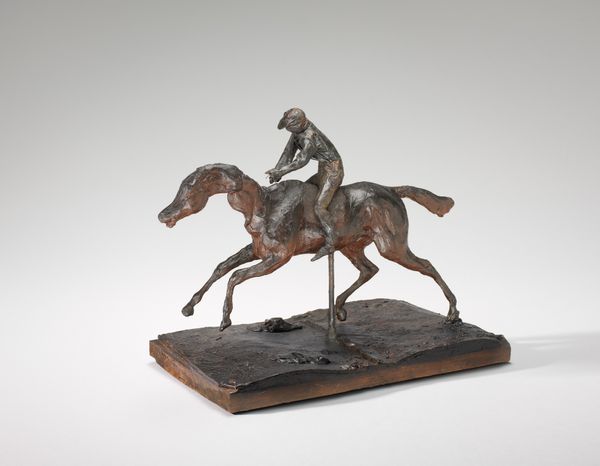
ceramic, sculpture
#
ceramic
#
figuration
#
sculpture
#
decorative-art
#
realism
Dimensions: Height: 11 1/2 in. (29.2 cm)
Copyright: Public Domain
Editor: Here we have "Prancing Horse," a ceramic sculpture created by Ralph Wood the Younger, sometime between 1775 and 1785. It feels both delicate and powerful. What sociopolitical readings can we find in what appears at first glance like a harmless objet d'art? Curator: That's a great entry point. I see a potent symbol of aristocratic power and colonial ambition masquerading as decorative art. Consider the era: the late 18th century, a time of burgeoning British imperialism. The horse, particularly a prancing white steed, has long been associated with nobility, military might, and conquest. How do you think its delicate materiality plays into this? Editor: Interesting. The ceramic, being fragile, complicates that reading, doesn’t it? Perhaps it speaks to the precariousness of power? Curator: Precisely. This piece, crafted during the build-up to the French Revolution and widespread colonial exploitation, exists within a tension between the assertion of dominance and the underlying fragility of that dominance. Note the highly stylized, almost theatrical pose of the horse, and its ornate base; could this be interpreted as a critique of performative power, or even a veiled commentary on the injustices upon which aristocratic wealth was built? Also, where were ceramics made in the world during the eighteenth century? Editor: I think your interpretation reframes my entire view. I hadn't considered the art as a symbol of power and the potential critiques of colonialism imbedded in it, given the global trade in luxury items and ceramics that would've supported British society and wealth at the time. Thank you. Curator: It’s crucial to always question the narratives of art history, who benefited from the art being made, and whose stories were being erased by them. Reflecting on how social contexts shape our perceptions of beauty can allow us to view it through an ethical lens.
Comments
No comments
Be the first to comment and join the conversation on the ultimate creative platform.
